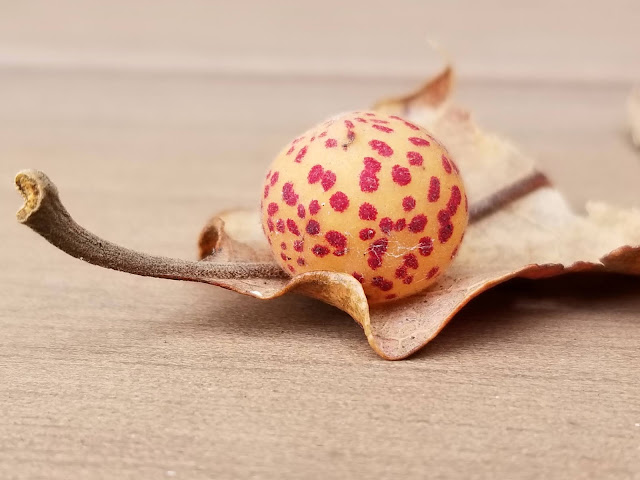 |
| Lynette Elliott CC |
This little beauty showed up on our hike through Wilson's Creek National Battlefield, spotted in the leaf litter by a sharp-eyed WOLF student. It is a small oak apple gall, and a quick trip to INaturalist confirmed its original owner as a speckled gall wasp, Cynips mirabilis. An egg is laid on a leaf in a newly opened bud, along with a dose of a plant stimulating chemical which causes the leaf to grow a protective structure around the egg. There a larva will grow, protected and fed by the leaf.
 |
| Parasitoid wasp - Lynette Elliott CC |
The female wasp is actually an engineer which provides several other services to nature. In addition to the tiny wasp that may develop, a parasitoid, such as the wasp above, may drill into the gall to lay its own egg. That larva will feed on the original owner, eventually killing it. Once either one of these emerge, other insects (called inquilines) such as ants and spiders may take up residence in the empty gall.
 |
| Cynipid parasitoid wasp - CC |
Oak galls usually create only mild cosmetic damage to the leaves. Most online information on them is how to get rid of them including insecticides which can destroy tiny ecosystems that we don't even know exist on our oak tree. If you see them as a wonderful slice of nature, you can learn more at this site. For more on the wonderful world of parasitoid wasps, check out this Amateur Anthecologist site.
(I didn't know either. Anthecology is the study of pollination.)











